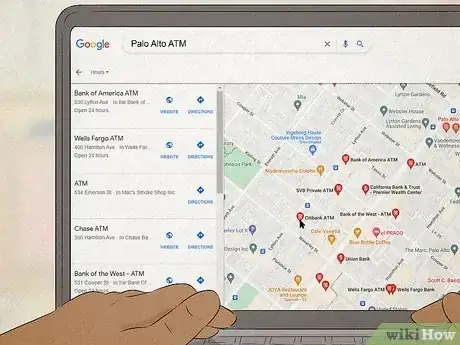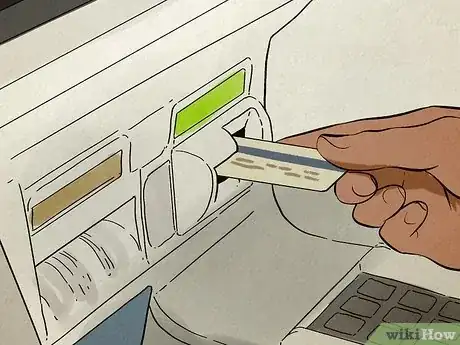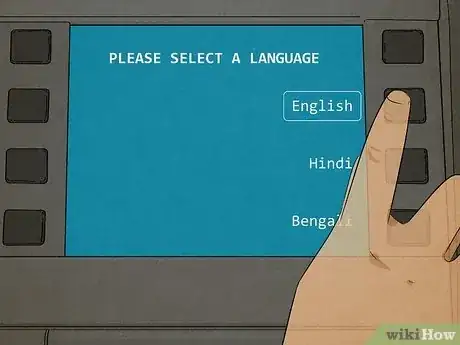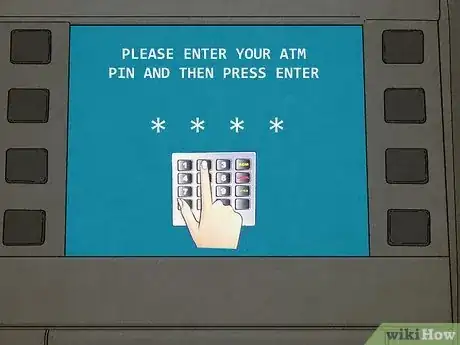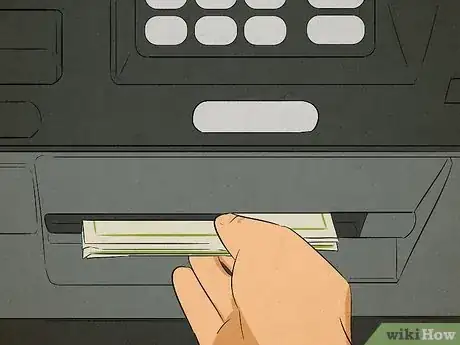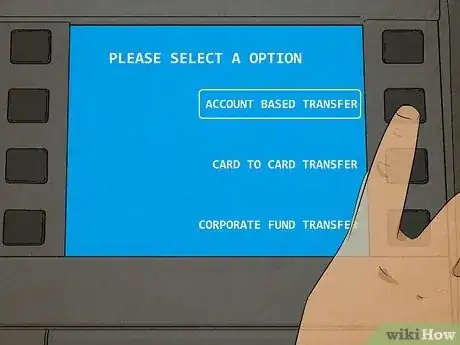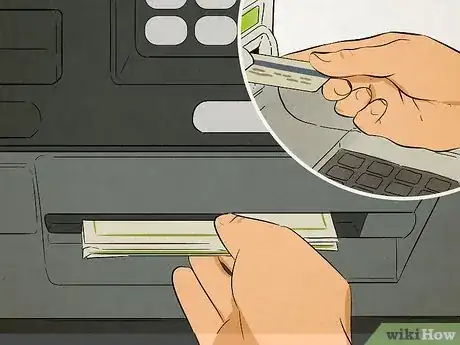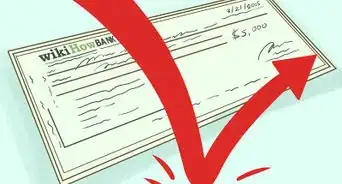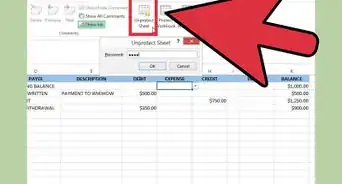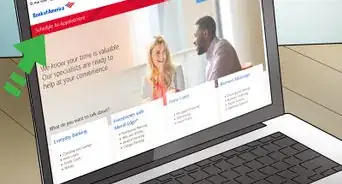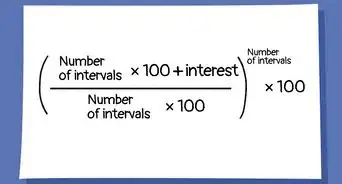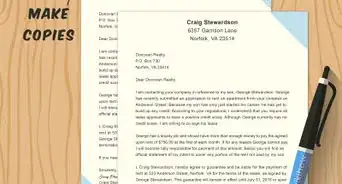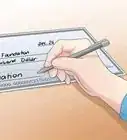This article was co-authored by wikiHow staff writer, Johnathan Fuentes. Johnathan Fuentes is a writer based in the New York City region. His interests as a writer include space exploration, science education, immigration, Latinx cultures, LGBTQ+ issues, and long-form journalism. He is also an avid hiker and has backpacked in Alaska and Newfoundland, Canada. A son of Cuban immigrants, he is bilingual in English and Spanish. Prior to joining wikiHow, he worked in academic publishing and was a freelance writer for science websites. He graduated from Columbia University in 2021, where he studied nonfiction writing and wrote for the student newspaper. He is currently counting down the seconds until the release of Kerbal Space Program 2 in 2023—a game that will almost certainly take up what little free time he has.
There are 15 references cited in this article, which can be found at the bottom of the page.
wikiHow marks an article as reader-approved once it receives enough positive feedback. This article received 22 testimonials and 100% of readers who voted found it helpful, earning it our reader-approved status.
This article has been viewed 2,139,516 times.
Learn more...
ATMs, a.k.a. “Automated Teller Machines,” make banking fast, simple, and reliable. You can use them for everything from getting cash, depositing checks, and even paying bills. If you haven’t used an ATM before, this guide will show you how easy it can be. Keep reading to learn how to use an atm with a debit card, how to withdraw cash or make deposits in different accounts, and how to pick the right ATM to avoid extra fees and save yourself money.
Things You Should Know
- Insert your card into the ATM with the card’s chip facing forward. Enter your PIN, then follow the onscreen prompts to complete your transaction.
- You can use ATMs to withdraw cash, deposit cash and checks, check account balances, transfer funds, and submit payments.
- Whenever possible, use ATMs affiliated with the bank that issued your card. You may be charged additional fees if your card doesn’t match the ATM’s bank.
- For your safety, use ATMs in well-lit, high-trafficked areas. Remember to take your card, cash, and receipt at the end of your transaction.
Steps
Accessing Your Account
-
1Locate a nearby ATM using Google or map software. If possible, find an ATM that matches the bank that issued your debit card. For example, if you own a Chase debit card, look for a Chase ATM or local branch. Though you can use your debit card at any ATM, you’ll likely be charged additional fees for withdrawing money from an ATM that’s not affiliated with your bank.[1]
- Some ATM services, like depositing cash, may only be available at ATMs that match your bank.
- If you may also be charged additional fees by your bank and the ATM itself.[2]
- Call your bank in advance to report travel plans and ask if there are extra fees for international ATM withdrawals.
-
2Check your surroundings to ensure you’re safe. Make sure the area is well-lit and that you’re either alone or with multiple people. In most cases, you won’t have to worry about your safety, but be on your guard and stand in front of the ATM so that your screen and key presses are not visible to anyone around you.[3]
- If possible, choose ATMs in well-trafficked areas and use them only during the day.
Advertisement -
3Insert your card into the ATM with the card’s chip facing forward. In most cases, your card will be a debit card.[4] Debit cards are most frequently used in ATMs and are linked directly to your bank account—so the money you withdraw will come from that account.[5] Some credit cards can also be used at ATMs, but the money comes from the card’s line of credit, so the ATM transaction will appear on your credit card bill.[6]
- If you accidentally insert the card incorrectly, simply remove it, flip it in a different direction, and try again.
- The ATM may also have a diagram or animation showing the correct way to insert the card.
-
4Select your language. Most ATMs will offer transactions in multiple languages, depending on where the ATM is located. Some ATMs will allow you to select your language before inserting your card, while others will ask you afterward.[7]
-
5Enter your PIN when prompted. "PIN" stands for "personal identification number," and it's typically a four- to six-digit password people use to access their bank account. Enter your PIN when asked to by the machine, making sure to shield the pad with your hand so that nearby onlookers can't see it.[8]
- The exact length of your PIN may vary depending on the financial institution associated with your ATM card.
- For security, never share your PIN with anyone.
Withdrawals, Deposits, & Other Transactions
-
1Withdraw cash from the ATM. Depending on the ATM, you’ll have the option for a “Fast Cash” withdrawal or a regular withdrawal. Fast Cash allows you to quickly select and withdraw a certain amount of cash from a list of common amounts—such as $40, $60, or $100. A regular withdrawal allows you to type an exact amount of cash to withdraw.[9]
- If you use your debit card at an ATM affiliated with your bank, you can select which account you want the withdrawal to come from.
- For example, if you have a checking and a savings account, you can choose to withdraw money from your savings account instead of the checking account that’s normally linked to the debit card.
- Be careful not to exceed your withdrawal limits. Most ATMs and banks limit how much cash you can withdraw at a time, or per day. The exact limit depends on your bank and the ATM you’re using.[10]
-
2Deposit checks or cash into an ATM affiliated with your bank. After entering your PIN, you’ll see an option for making deposits. Select “Deposit Cash” or “Deposit Checks.” A small door will slide open near the card reader, revealing a slot where you can insert the cash or checks. Insert them, then let the machine count them. You’ll be asked to confirm the total amount for the deposit. If the amount shown is wrong, edit it to reflect the correct amount. Once the correct amount is shown, hit confirm to complete the deposit.[11]
- If you have multiple accounts, you’ll be given the option to select the account where the money will be deposited.
- Your deposit may not be immediately available, or only a portion of it may be available at first. It may take a few days before the full amount is made available.
- Most ATMs don’t allow you to deposit checks and cash at the same time. If you want to deposit both cash and checks, you’ll need to do two separate deposits.
- You cannot make deposits if the ATM that is not affiliated with your bank.
-
3Check your account balance using an ATM affiliated with your bank. After entering your PIN, you’ll see an option for checking your account balance. Your balance is the amount of money available in your account. This balance may be displayed on the screen or printed on a receipt, depending on the ATM.[12]
- If you have multiple accounts, you’ll be given the option to select which account balance you want to view. You may also be able to view all balances at once.
- In some cases, you can still check your account balance using an ATM that’s not affiliated with your bank. But you may be charged fees for doing so.
-
4Transfer money between accounts using your bank’s ATM. If you have multiple accounts with your bank, you can transfer money from one account to another using one of your bank’s ATMs. After entering your PIN, choose the “transfer” option. Select which account you want to transfer from, followed by the account you want the money moved to. Specify the amount of money you want to transfer, then hit confirm to complete the transfer.[13]
- Some banks allow you to pay bills using their ATMs.
- For example, if you have a credit card with your bank, you may be able to pay your credit card bill by transferring money from a bank account to the credit card balance.
- Check with your bank to confirm whether you can pay bills via an ATM. Depending on your bank, you may need to authorize ATM payments through an online portal first.
-
5Press the red “X” button on the keypad to end your session. Depending on the ATM, you may also select an option onscreen such as “Cancel,” “End Session,” or “Return my card.” If you cancel your session in the middle of a transaction, the transaction will be canceled.[14]
- If you have already completed a transaction, hitting the red “X” button will not undo the transaction. For example, if you have finished depositing a check, pressing “X” will not cause the machine to return the check.
-
6Take your card, cash, and receipt. It's easy to forget to take your money, card, or receipt when you're in a hurry. Be sure to grab these and put them away safely in your wallet or purse. Depending on the ATM, you may be asked if you want a printed receipt. Hit “Yes” to obtain a printed copy, or hit “No” if you prefer to review the transaction later via your bank’s website.[15]
- If you forget your card, return to the ATM right away to retrieve it. If it’s lost, call your bank and cancel the card right away. Your bank will issue you a new card.[16]
Community Q&A
-
QuestionHow do I use a debit card in an ATM for the first time?
 wikiHow Staff EditorThis answer was written by one of our trained team of researchers who validated it for accuracy and comprehensiveness.
wikiHow Staff EditorThis answer was written by one of our trained team of researchers who validated it for accuracy and comprehensiveness.
Staff Answer wikiHow Staff EditorStaff AnswerFirst, you’ll need to select a PIN. You may need to call or visit your bank to do this, or there may be instructions on the paperwork that came with your card. Typically, you can activate your new card by using it in an ATM and entering the PIN. If that doesn’t work, you may need to call the number on the card and activate it over the phone before you can use it in an ATM.
wikiHow Staff EditorStaff AnswerFirst, you’ll need to select a PIN. You may need to call or visit your bank to do this, or there may be instructions on the paperwork that came with your card. Typically, you can activate your new card by using it in an ATM and entering the PIN. If that doesn’t work, you may need to call the number on the card and activate it over the phone before you can use it in an ATM. -
QuestionWhich side of the card do I insert into the machine?
 wikiHow Staff EditorThis answer was written by one of our trained team of researchers who validated it for accuracy and comprehensiveness.
wikiHow Staff EditorThis answer was written by one of our trained team of researchers who validated it for accuracy and comprehensiveness.
Staff Answer wikiHow Staff EditorStaff AnswerThat depends on the machine. Most ATMs will have an image on the screen or next to the card reader showing which way to insert the card, especially if the card slot is vertical. For horizontally oriented card readers, the card is typically inserted face up, with the magnetic strip facing down and to the left.
wikiHow Staff EditorStaff AnswerThat depends on the machine. Most ATMs will have an image on the screen or next to the card reader showing which way to insert the card, especially if the card slot is vertical. For horizontally oriented card readers, the card is typically inserted face up, with the magnetic strip facing down and to the left. -
QuestionHow do you use a credit card at an ATM?
 wikiHow Staff EditorThis answer was written by one of our trained team of researchers who validated it for accuracy and comprehensiveness.
wikiHow Staff EditorThis answer was written by one of our trained team of researchers who validated it for accuracy and comprehensiveness.
Staff Answer wikiHow Staff EditorStaff AnswerFirst, you’ll need to check with your card provider to make sure your account is set up to allow cash withdrawals. They can help you set up a PIN for your credit card, if you didn’t already do so when you activated it. Once you have your PIN, you can use the credit card the same way you would use a debit card. However, be aware that you’ll probably need to pay a hefty cash advance fee.
wikiHow Staff EditorStaff AnswerFirst, you’ll need to check with your card provider to make sure your account is set up to allow cash withdrawals. They can help you set up a PIN for your credit card, if you didn’t already do so when you activated it. Once you have your PIN, you can use the credit card the same way you would use a debit card. However, be aware that you’ll probably need to pay a hefty cash advance fee.
Warnings
- Check your surroundings before using an ATM. If possible, only use ATMs in well-lit, high-trafficked areas.⧼thumbs_response⧽
- Never share your PIN with anyone.⧼thumbs_response⧽
- Cover the keypad with your other hand when entering your PIN.⧼thumbs_response⧽
- Be sure to end your session and take your card, cash, and receipt from the machine.⧼thumbs_response⧽
References
- ↑ https://www.chase.com/content/dam/chasecom/en/checking/documents/clear_simple_guide_total.pdf
- ↑ https://www.associatedbank.com/pdf/consumerdepositaccountfeeschedule.pdf
- ↑ https://portal.ct.gov/DOB/Consumer/Consumer-Education/ATM-Safety-Advice
- ↑ https://www.jtvaecu.org/pdfs/ChipCards-FAQs.pdf
- ↑ https://consumer.gov/managing-your-money/using-debit-cards
- ↑ https://www.chase.com/content/feed/public/creditcards/cma/Chase/COL00095.pdf
- ↑ https://www.eaglerivercu.com/SharedContent/images/ONlineBanking101/ATMinstructions.pdf
- ↑ https://consumer.gov/managing-your-money/using-debit-cards
- ↑ https://advantage-network.com/wp-content/uploads/sites/2/2021/05/AdvantageATMServices.pdf
- ↑ https://www08.wellsfargomedia.com/assets/pdf/personal/debit-card/terms-and-conditions.pdf
- ↑ https://www.pnc.com/content/dam/pnc-com/pdf/personal/Services/ATM-chart.pdf
- ↑ https://www.businessinsider.com/personal-finance/how-to-check-your-debit-card-balance
- ↑ https://www.chase.com/content/dam/chase-ux/documents/personal/checking/ABSF-en.pdf
- ↑ https://www.essexice.co.uk/media/49262/how-to-use-an-atm-and-stay-safe.pdf
- ↑ https://www.pnb.com.ph/wp-content/uploads/docs/userguide-atm.pdf
- ↑ https://consumer.ftc.gov/articles/lost-or-stolen-credit-atm-debit-cards
About This Article
To use an ATM, first insert your debit card into the machine. Select your language if necessary, then enter your account’s secure 4-digit PIN number. For security, cover the number pad while typing to make sure nobody sees your PIN. Once the menu screen pops up, select whether you want to withdraw money, deposit money, transfer money, make a payment, or check your account balance. Then, follow the on-screen prompts to complete your transaction. To learn how to switch to mobile banking, read on!
